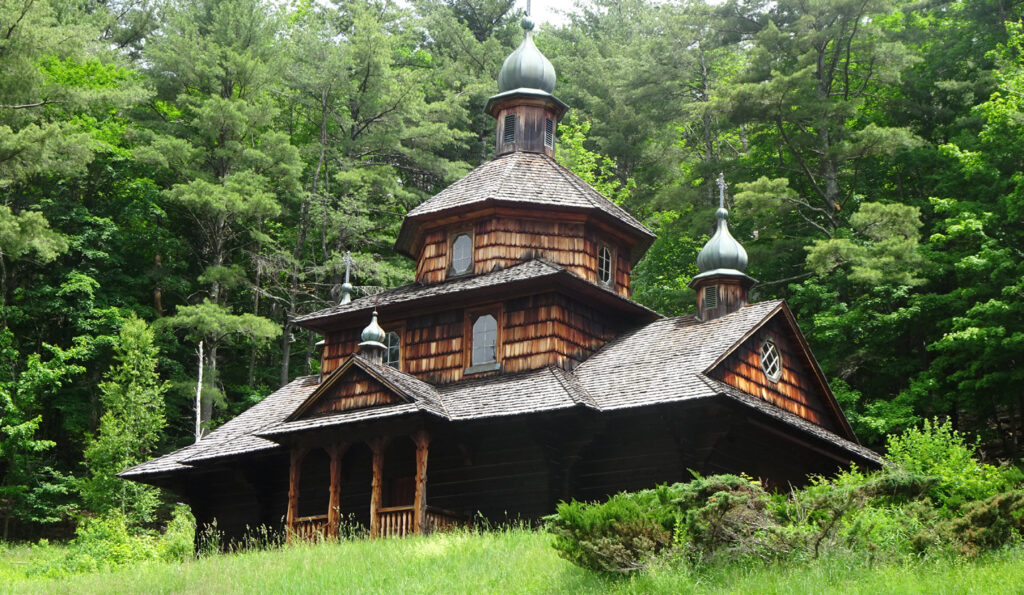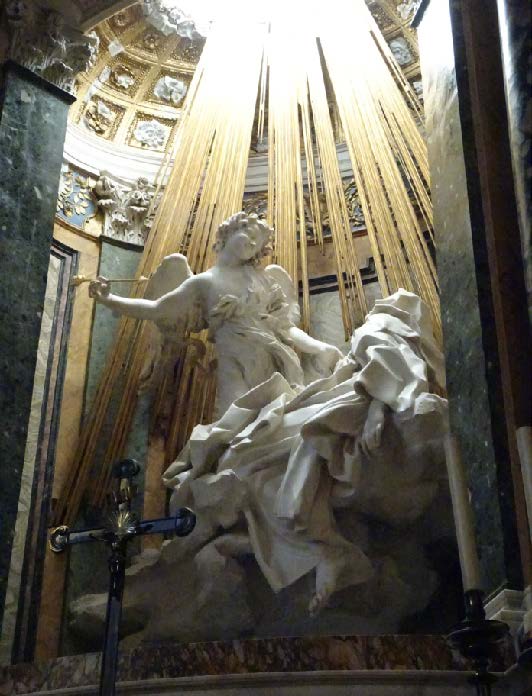
Like ruins, tombs and temples, to my eye and mind, churches and museum also serve as museums. The Vatican is one of the greatest museums in the world, although it is essentially a religious edifice, the Apostolic Palace, home of the Pope. Vatican visitors arrive very prepared for the well-known treasures, mainly the Sistine Chapel and the Raphael Rooms, but I’m sure most first-time visitors are not prepared for the enormous array of collections and magnificent works of art you are obliged to pass on the way to the highlights. The Vatican Museums are filled with incredible works of art acquired, commissioned and accumulated by Popes. Religious art or not (e.g., mosaic floors and maps, Greek and Roman pottery and statues, etc.), the art is overwhelming.

St. Peter’s Basilica is also filled with world-famous works, especially Michelangelo’s Pieta, as well as a myriad of not-so-well-known treasures. In 1970, during our first visit, there were no lines for St. Peter’s, and it was possible to join a tour provided by Dutch nuns from the Foyer Unitas on the Piazza Navona. The nuns charged 50 lire per person (about 25¢) and advertised that the tours were mostly for non-Catholics. We certainly qualified. St. Peter’s Basilica also has to be seen as one of the greatest museums in the world. One difference: the Vatican sells tickets online but it isn’t possible to buy tickets for St. Peter’s. Similarly, most churches and cathedrals around the world also do not sell tickets, although some charge tourists entry fees, and all churches have receptacles for donations.

I think that all of the art in cathedrals and churches is officially religious art, but the art can be appreciated by all. Much of the art in churches was donated long ago by local bourgeoisie demonstrating their piety and hoping to pave their way to heaven. Many such donors appear in paintings in prayer, usually smaller than Jesus, Mary and saints, perhaps even identified by name. While its clear that many of the visitors to churches, especially on Sundays, are devout, in my observation more of the visitors these days come for the art, starting with the architecture. They come with guides and guidebooks, singly, in couples and in groups, cameras and cell phones popping away. Some stop to light candles while others accidentally interrupt services. Some are witness to strangers’ weddings, while others mingle among mourners.

Who can stand in front of Notre Dame, Chartres, the Duomo in Milan and a myriad of other magnificent cathedrals and churches and not be moved by the beauty of each? Think of Reims, Rouen, Amiens, Seville, La Sagrada Familia in Barcelona, St. Mark’s Basilica in Venice, Orvieto, Pisa…. But there are hundreds (perhaps thousands) more, including medieval parish churches in France, St. Stephen’s Cathedral in Vienna, and the little ancient Greek Orthodox churches in the Peloponnese, churches with bleeding Christs in Latin America and churches with beautiful wooden exteriors in Ukraine.
When we enter these buildings, the interiors overwhelm us. You don’t have to believe in God to have an intense emotional reaction to the frescoes, statues, paintings, organs, pillars, stained glass windows, pulpits, and carved choirs, many of which are world-class works of art. The church of San Pietro in Vincoli (St. Peter in Chains) in Rome, high on a hill, is a bit out of the way for most tourists, but the draw is an imperative for art lovers: Michelangelo’s Moses, although we have to feign not noticing Moses horns as a bit of anti-Semitism. St. Teresa of Avila by Gian Lorenzo Bernini in Santa Maria della Vittoria in Rome is another such treasure.

The Cathedral of Córdoba, Mosque Spain (Cathedral of Our Lady of the Assumption), amazingly is inside a former mosque, known as the Mezquita (and as The Great Mosque of Córdoba), which dates from 785 CE, when Córdoba was the capital of the Muslim-controlled region of Al-Andalus. Taken as a museum, it’s hard to stop being thrilled by the wonders of the Islamic art as well as the 16th-century Christian art. The Mezquita is famous for its red-and-white giant arches resting on 856 columns, described as a forest of columns in our Michelin Green Guide. We can only wonder what Córdoba’s Roman temple and other ancient buildings looked like before they were dismantled to be used as construction materials for the Mosque. (Nearby we can see the remnants of Córdoba’s large ancient Jewish community, former home of the philosopher Maimonides. There’s also a small Jewish Museum.)

One of the greatest treasures among European churches is the Basilica di Sant’ Apollinare Nuovo in Ravenna, Italy, with its fabulous mosaics. But our favorite is the Abbaye Sainte-Marie-Madeleine de Vézelay, a Benedictine and Cluniac monastery in east-central France, constructed between 1120 and 1150. As you move around the nave, the capitals are so magnificent that each one requires a lengthy inspection and a photo, and you struggle with the desire to take at least one of them home, which we did (from the souvenir shop). G&S
Photos are by Norman A. Ross





Leave a Comment